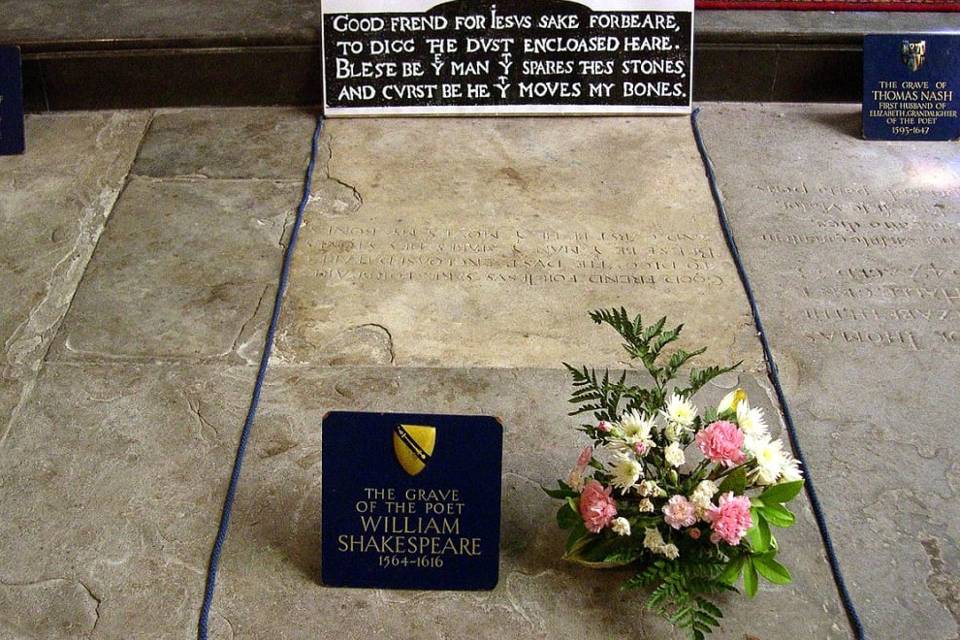 Photo credit: David Jones
Photo credit: David Jones
Shakespeare’s Grave
“O may I join the choir invisible
Of those immortal dead who live again
In minds made better by their presence; live
In pulses stirred to generosity,
In deeds of daring rectitude…”
― George Eliot, O May I Join the Choir Invisible! And Other Favourite Poems
I like visiting cemeteries. It provides one unexpected encounters with names of historical figures, some known by many, some just by a few. Even if this is not so, each visit helps one see things in perspective, refreshed from trifles and the futile.
I used to go weekly to Paco Park and Cemetery since it used to be just a block away from where I lived. The whole family would attend Sunday mass there, listen to live classical concerts and take the much-needed visual breather of being surrounded by century-old acacia trees and other forms of green flora. Of course, the place also bespeaks history and heritage since the spot where Dr. Jose Rizal was first buried there is marked with a bust, and it is the place to go to pay homage to the contribution of the three Filipino Priest Martyrs to Philippine emancipation.
Likewise, my trip to Stratford-upon-Avon included a visit to Shakespeare’s grave, inside Holy Trinity Church. From his gravestone, one reads that Shakespeare died on his birthday – 23 April – in 1616, the day he turned 52.
It was unusual for the non-clergy to be buried inside the church in Stratford, and Shakespeare managed this by buying a tithe deed for £440 granting him the right to have a grave in the chancel of the church, to have his final resting place alongside other family members. However, even though Shakespeare was certain that he would be buried under a stone slab inside a church, he was worried about grave robbers, and to scare off potential thieves, Shakespeare wrote the following epitaph as a deterrent:
Good friend for Jesus sake forbear,
To dig the dust enclosed here.
Blessed be the man that spares these stones,
And cursed be he that moves my bones.
Indeed, visiting burial sites or cemeteries for the sake of the cemeteries themselves may provide fascinating displays of art, architecture, and tradition. And in the Philippines, tour itineraries with this as subject is becoming more frequent, one of the more popular would be Paco Park and its historic cemetery.
Opened in 1822 and built by the Dominicans, the Paco Park and Cemetery was once the resting place of members of high Spanish society. The niches were on a circular wall, surrounding a domed chapel at the very center. The cemetery played quite a part in Philippine history when it became the site of unmarked graves for not one but four heroes. The park is now a popular choice for weddings and wedding receptions, with most of the bodies in the niches exhumed.
A popular stopover in a Laguna tour is the Nagcarlan Underground Cemetery. Located 15 feet below a church built in 1845 for funeral mass by Franciscan Fr. Vicente Velloc, this cemetery was a secret meeting place where legendary Filipino heroes, from the revolutionaries of the KKK to patriots of the Filipino-American war, would formulate battle plans. It is also the only underground cemetery in the country and was declared a National Historical Landmark in 1981.
Today, cemetery tourism is a growing market as more pilgrims and travelers visit graveyards to reflect on their lives, seek out the grave of a famous person, or travel to learn more about their family by finding the final resting place of loved ones. Visiting a graveyard is no longer reserved for those in mourning.


No Comments